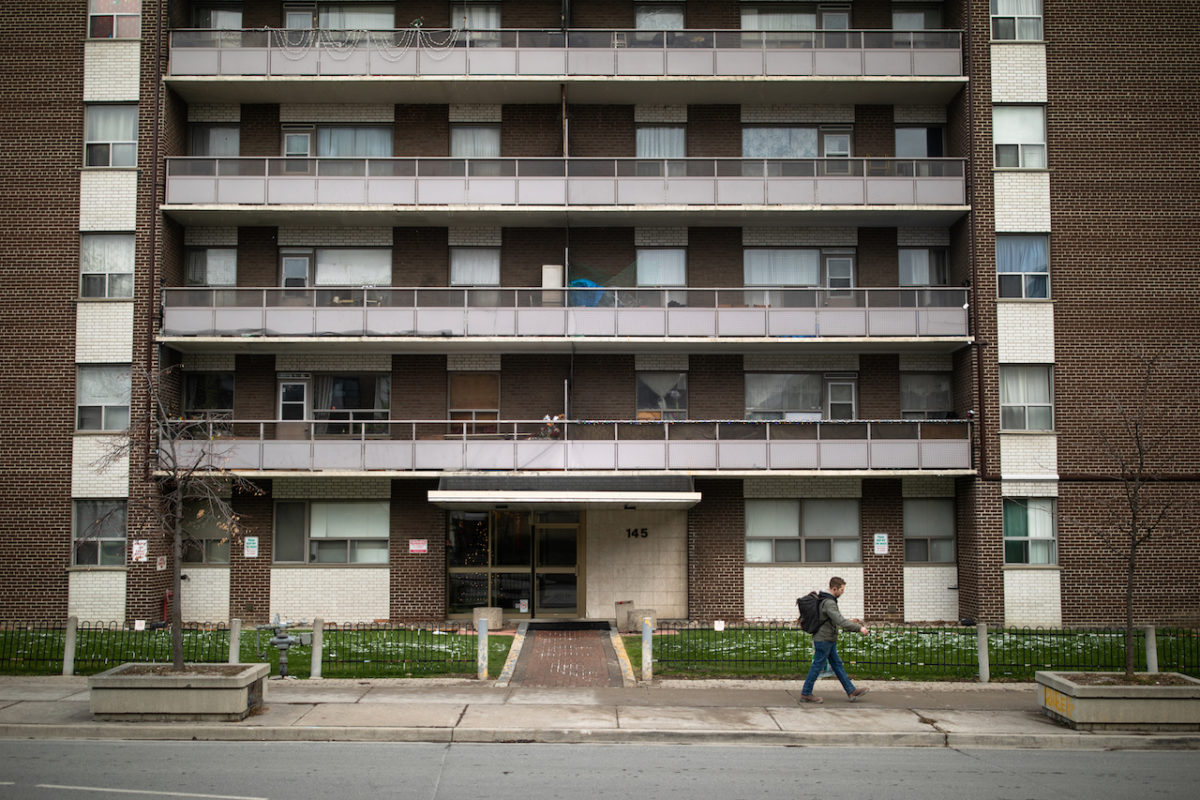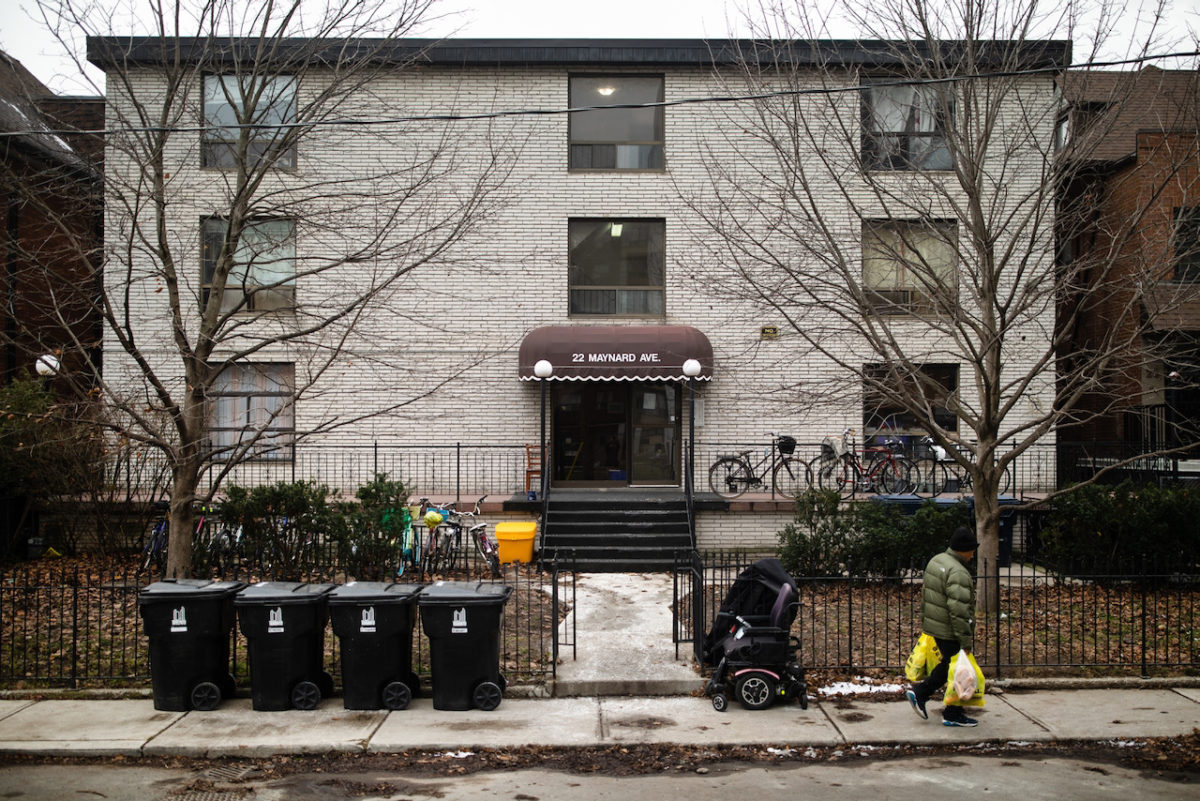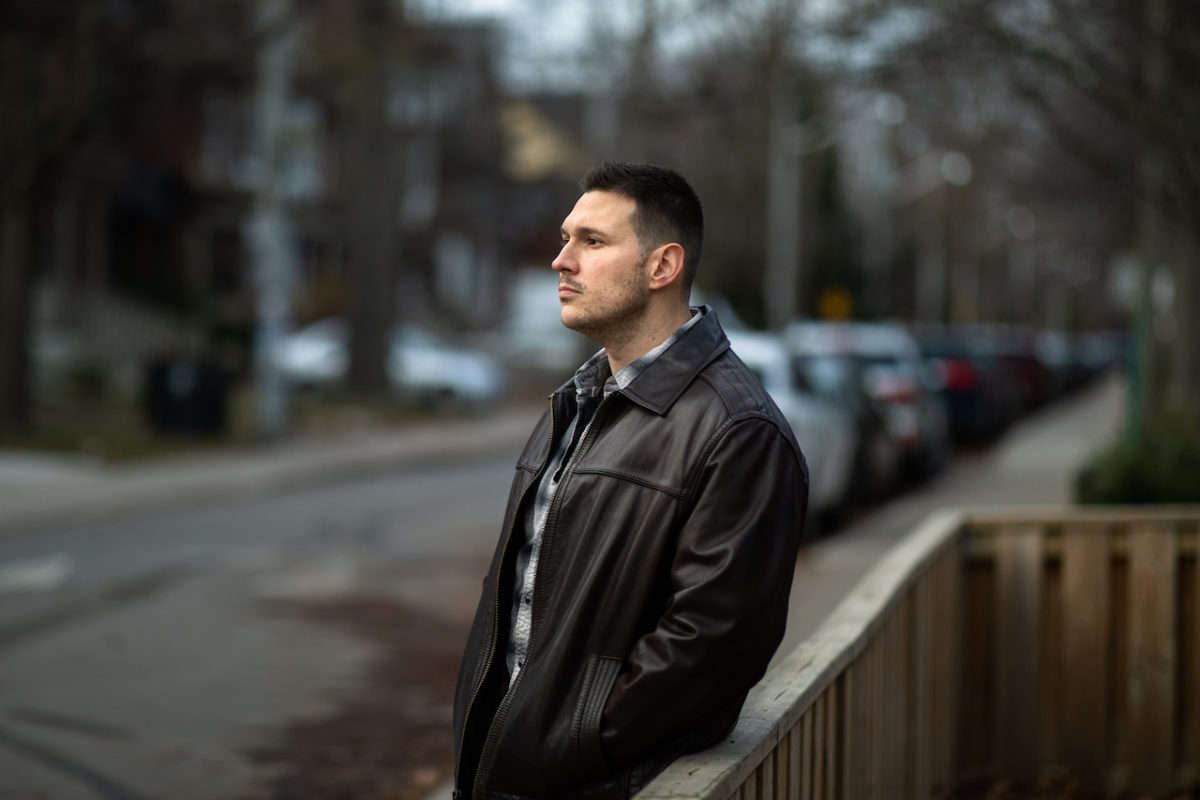Anthony Foster has lived in the same two-bedroom apartment in a Toronto Community Housing building for 14 years. The building is a six-unit, market-rent triplex at Bloor and Bathurst. For a while, the 34-year-old had a roommate, but currently, it’s just him and his dog, a rescue named Abby. When Foster found the place, back in 2008, he was a second-year student at the University of Toronto. He stumbled across the apartment through a friend of a friend, but was so excited to find a convenient and affordable place, he signed a lease before he’d even set foot in it (a glimpse through the windows was enough). It was, Foster said later, a “godsend” — close to school, downtown, the TTC. The rent, which currently sits around $1,500 a month, was within his means.
Created in 2002 in the wake of Mike Harris’ forced amalgamation of the city, the Toronto Community Housing Corporation (TCHC) combined two other agencies to become the second-largest housing provider in North America. For years, the Harris government had been attacking and undermining affordable housing: in the mid-90s, it cancelled hundreds of construction contracts; in 2000, it was the first provincial government to download full responsibility for social housing to municipalities. Now, TCHC owns and manages about 60,000 rental housing units, but it is a highly politicized entity, its executive and budget consistently shaped by leadership at City Hall.
TCHC may not have had the greatest reputation, but as far as Foster was concerned, it turned out to be a decent enough landlord. There were hiccups — a lease that initially shifted inappropriate costs onto tenants, and later, some neglected repairs — but Foster chalked those up to the agency’s massive bureaucracy. More worrisome to him was a growing sense of precarity. While he was perfectly content in his home, he became increasingly concerned, as Toronto’s rents and real estate prices skyrocketed around him, about its long-term stability. (According to the Canadian Mortgage and Housing Corporation, the average rent for a two-bedroom apartment in Toronto increased almost 47 percent between the time Foster signed his lease and fall 2021.) He felt that the city had a long history of selling public assets for short-term gain, and feared that, with time, it might sell off buildings like his. Finding another affordable apartment in the downtown core would be extremely difficult. “I likely would have had to leave the city altogether,” he says, “given current rents.” He was lucky, he had a job, working in healthcare. But his other neighbours, some of them elderly, didn’t have as many options. Foster also occasionally provided a safe harbour for his siblings. One of his brothers had struggled with addiction and was currently unhoused; Foster let him stay with him when he needed. When another brother was “renovicted,” he moved in with Foster too. If he lost the apartment, his whole family would be upended.
Then, a couple years ago, TCHC came to tell Foster that his building was being sold. Sort of. As part of its Tenants First project, launched in 2018 to improve the quality and services of TCHC, the city planned to transfer its so-called “scattered housing portfolio” of 637 single-family homes to nonprofit social housing providers. The city and TCHC issued a request for proposals from providers, promising that Foster and all other tenants would be able to stay in their homes, and any existing rent subsidies would continue. But the transfer was delayed, and there was less and less communication from TCHC. What if they didn’t receive an adequate proposal? Foster’s uncertainty grew.







